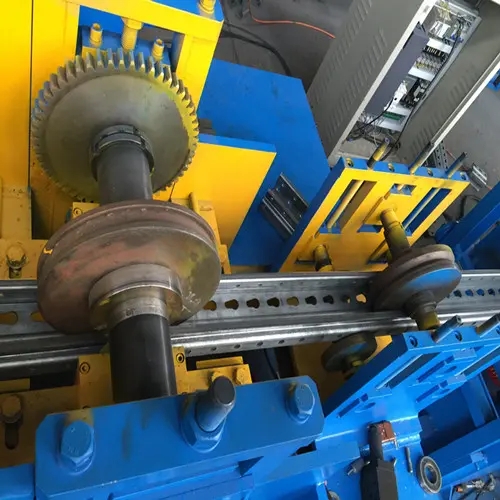
The Innovative Technology Behind Galvanized Steel Round Downpipe Machines
In the modern construction and architectural landscape, the importance of effective water drainage systems cannot be overstated. Among the various components that ensure effective rainwater management, downpipes or downspouts play a crucial role. Specifically, galvanized steel round downpipes are highly favored due to their durability, resistance to corrosion, and aesthetic appeal. The production of these essential components has been revolutionized by advanced machinery designed specifically for manufacturing galvanized steel round downpipes.
Understanding Galvanized Steel
Galvanized steel is essentially steel that has been treated with a protective zinc coating to prevent rust and corrosion. This treatment enhances the longevity and durability of steel, making it an ideal choice for applications exposed to varying weather conditions. In downpipes, this means that they can withstand moisture, rain, and even extreme temperatures without degrading over time.
The Role of Downpipe Machines
The machines designed for the production of galvanized steel round downpipes are a remarkable example of modern engineering and technology. These machines automate the process of cutting, shaping, and forming the steel into the desired pipe dimensions, ensuring consistency and precision in production. The key processes involved include
1. Coil Feeding Galvanized steel is usually supplied in coil form, which is fed into the machine. This allows for continuous production and minimizes material waste.
2. Cutting and Shaping The machine cuts the steel coils to the required lengths and shapes them into round pipes. Advanced forming technology allows for the creation of various diameters and thicknesses tailored to specific architectural needs.
3. Seaming After shaping, the edges of the pipe are joined together using various techniques, such as welding or mechanical seaming, ensuring that joints are strong and water-tight.

4. Finishing Once the pipes are formed, they undergo several finishing processes, including cleaning and inspection, to ensure they meet high-quality standards.
Benefits of Using Downpipe Machines
The use of specialized machines for producing galvanized steel round downpipes offers numerous advantages
- Efficiency Automated machines can produce large quantities of downpipes in a fraction of the time it would take to manufacture them manually. This increased productivity benefits manufacturers and meets the demands of construction projects more effectively.
- Consistency Automated production ensures that each pipe is manufactured to the same specifications, resulting in a uniform product that performs reliably across installations.
- Cost-Effectiveness Although the initial investment in such machinery can be significant, the long-term savings in labor, material waste, and production time can lead to substantial cost reductions.
- Customization Many modern machines allow for customization options, enabling manufacturers to produce downpipes tailored to specific customer requirements, including different diameters, lengths, and finishes.
Conclusion
As the construction industry continues to evolve, so too does the technology that supports it. The machines designed for the production of galvanized steel round downpipes are a testament to this progression, balancing efficiency, durability, and customization. By adopting these innovative machines, manufacturers not only enhance their operational capabilities but also contribute to the creation of long-lasting, sustainable infrastructure that effectively manages rainwater runoff. In an era where environmental considerations are increasingly paramount, such advancements will play a critical role in shaping a resilient and efficient future for our built environments.